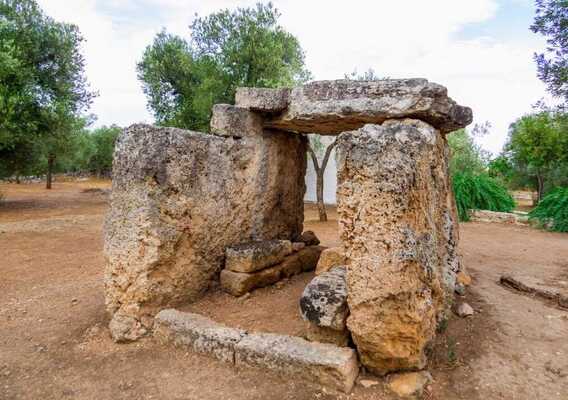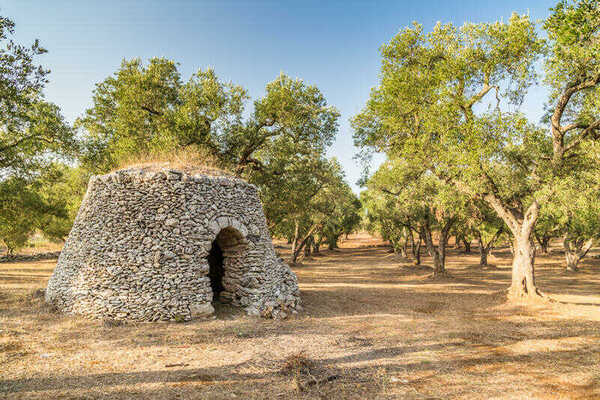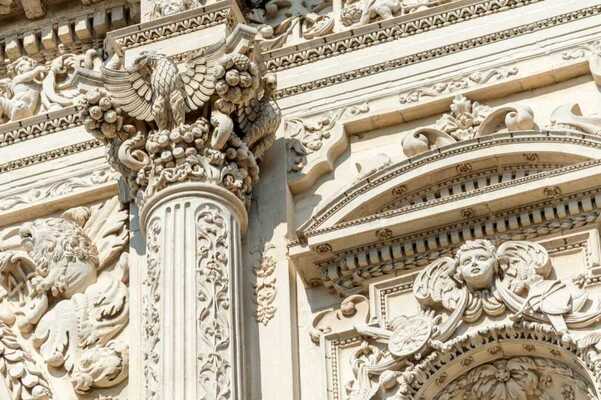The “Specchie” in Puglia
A living testimony of prehistory in Puglia are the “Specchie” constructions similar to towers and consist of artifacts of very ancient origins made dry from piles of limestone. It is not possible to give these constructions a precise historical location: according to some scholars, in fact, their appearance dates back to the Neolithic, while, for others, they date back to the times of the Messapians.

Their function
Their real function is very uncertain. According to some paleontologists the Specchie represent the ruins of ancient and gigantic houses, similar to the Sardinian nuraghi and the very famous trulli, for others they are constructions erected for defensive purposes by primitive man, finally, for still others they have a tomb function. But the most concrete hypothesis is that they served as a lookout post to control the coast.
The types of Specchie in Puglia
The mirrors are divided based on size and functions into:
- Large Specchie: structures that rise following a conical shape with a height of approximately 10-15 metres.
- Small Specchie: piles of stone that seem to have had funerary functions. Generally these are simple piles of stones created spontaneously to form small bumps of limestone stones scattered across the countryside.
Where are Specchie found in Puglia
The Itria Valley, some municipalities of Salento and the Gargano have various Specchie scattered throughout their territories. In fact, there are 18 around Ceglie Messapica, 10 near Villa Castelli, others scattered between Cisternino, Fasano and Francavilla Fontana. The most famous of the Tarantina mirrors is that of the hamlet of the municipality of Martina Franca.
Northern Salento and the Oria area also have some specimens of Specchie, others are scattered between the areas of Martano, Ugento, Cavallino and Presicce. There is no shortage of them in the Murgia Barese area. In the territory of Salve, a municipality in Puglia in the province of Lecce, there are 3 mirrors: the Specchia Cantoro, the Specchia Spriculizzi, the Specchia Cucuruzzi, otherwise known as the Fersini, the most impressive and ancient. Rich in charm and mystery, Specchia dei Mori arouses the great interest of scholars and tourists.
Located near Martano-Caprarica, it is also known as the “Segla tu demoniu“. An ancient legend has it that this mirror hides inside a treasure consisting of a hen and twelve golden chicks, impossible to take because they are in the hands of the devil.
Another fascinating legend that hovers around this “enchanted” mirror tells that giant Moors, ancient inhabitants of these places, decided to build this mirror so high to be able to climb up to the sky. The gesture was not appreciated by the gods who therefore caused it to collapse, burying those who had built it with the stones of the collapse.
To date, these ancient buildings are shapeless but at the same time continue to exert a great fascination on the multitudes of tourists who come to visit these places of ritual and mystery.

The Dolmens in Salento
It is difficult to explain the overwhelming love for this extraordinary place, a land made of landscapes, colors and mysteries: Salento which has very ancient, even prehistoric, roots. We start precisely from the 4th millennium BC. with the birth of the Dolmen in the Salento area.

The “Pajare” in Salento
The Pajare also called "caseddhi", but also "pagghiari" or "furni" are particular typical buildings present in Salento and are considered typically rural homes and built with the dry wall technique. Furthermore, they respect the standards of green building because the use of natural materials such as stone does not affect the environment, becoming a true engineering marvel.

The Lecce baroque
Lecce known as the "Florence of the South" is an open-air museum that enchants its visitors with the exuberance of its typical features of the Lecce Baroque, visible in its architecture in the historic center.
